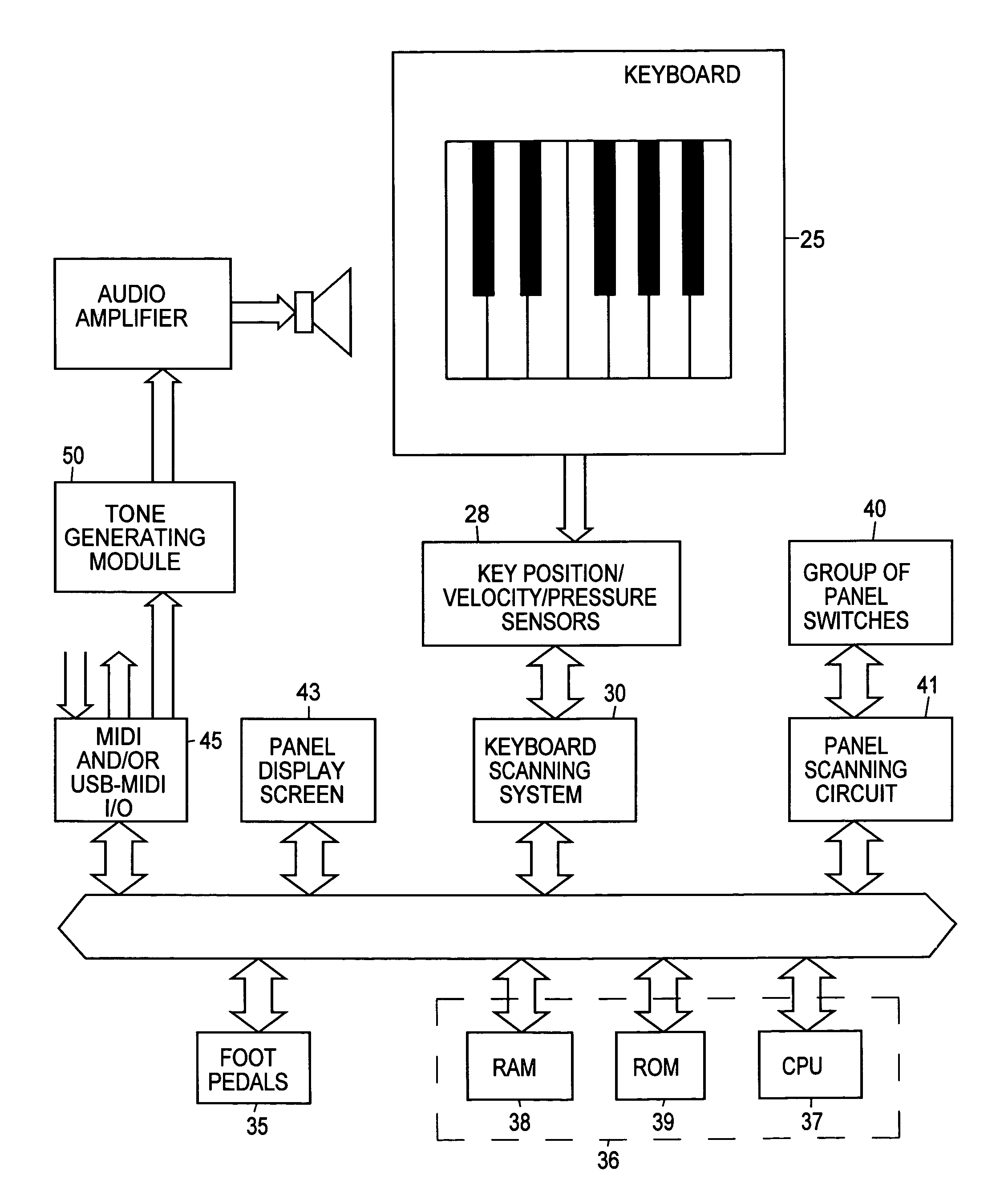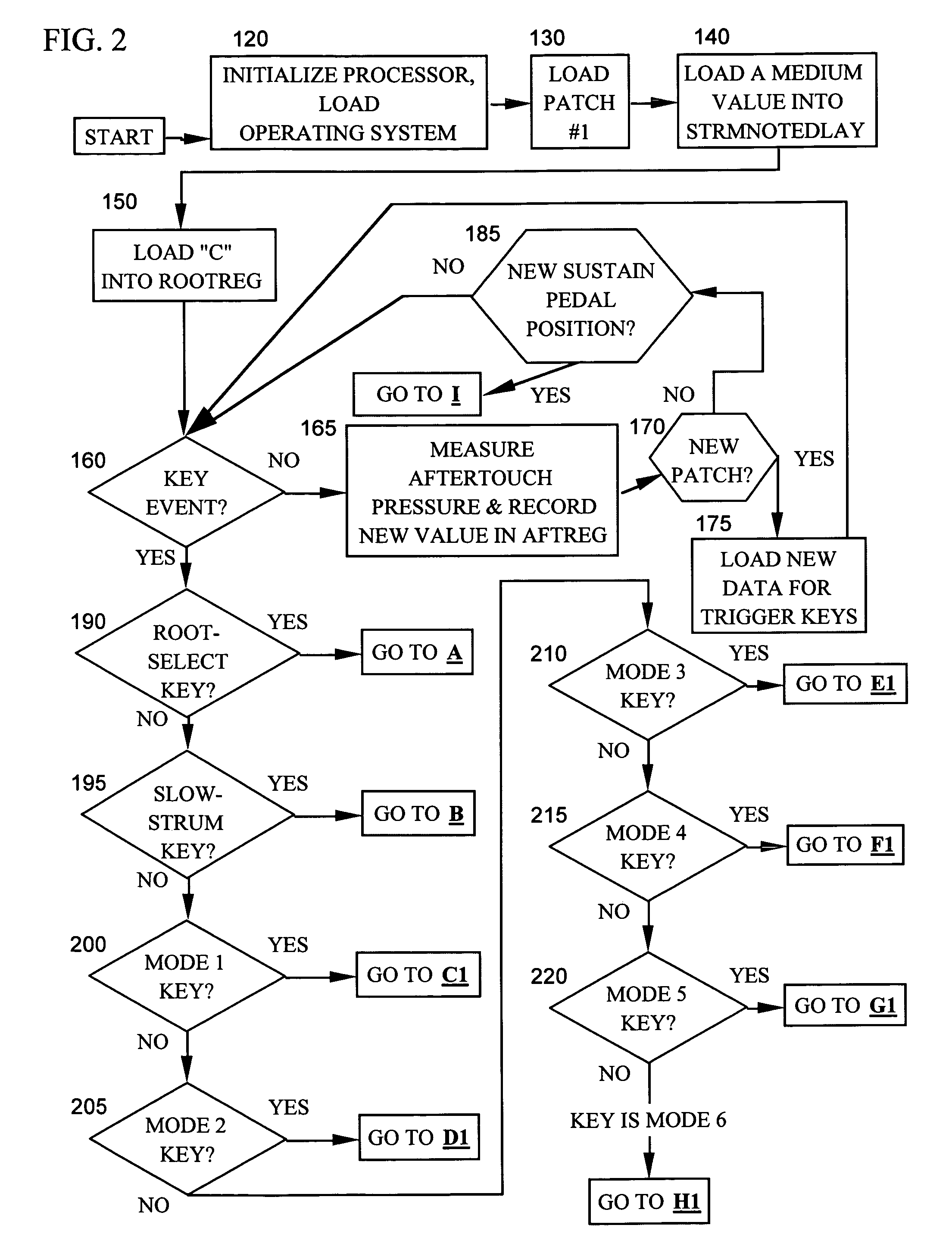Method for producing real-time rhythm guitar performance with keyboard
a keyboard and rhythm guitar technology, applied in the field of keyboard-controlled electronic musical instruments, can solve the problem that musicians will sometimes accidentally strike two adjacent keys
- Summary
- Abstract
- Description
- Claims
- Application Information
AI Technical Summary
Benefits of technology
Problems solved by technology
Method used
Image
Examples
Embodiment Construction
I. Overview
The preferred embodiment of the invention is a midi / USB-midi controller keyboard unit incorporating the following features (See FIG. 1):
(1) a standard two-row (one white keys row and one black keys row) 61-note keyboard 25 which extends five octaves from a low C note to a high C note;
(2) a key state sensing system (including key position / velocity / pressure sensors 28 and a system to scan these sensors 30) which can, for each key of the keyboard 25, sense downward / upward velocity;
(3) two foot-switch pedals 35, consisting of a left-side select pedal and a right-side sustain pedal;
(4) a microprocessor-controlled computer system 36 (including a central processing unit 37, a random-access memory 38, and a read-only memory 39) which can process information received from the key state sensors and other input devices;
(5) a control panel including various switches 40 to perform various control duties (e.g., changing the operating mode of the unit and / or patches);
(6) a panel scannin...
PUM
 Login to View More
Login to View More Abstract
Description
Claims
Application Information
 Login to View More
Login to View More - R&D
- Intellectual Property
- Life Sciences
- Materials
- Tech Scout
- Unparalleled Data Quality
- Higher Quality Content
- 60% Fewer Hallucinations
Browse by: Latest US Patents, China's latest patents, Technical Efficacy Thesaurus, Application Domain, Technology Topic, Popular Technical Reports.
© 2025 PatSnap. All rights reserved.Legal|Privacy policy|Modern Slavery Act Transparency Statement|Sitemap|About US| Contact US: help@patsnap.com



